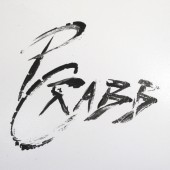![]() Printer version
Printer version
Patrick Crabb
1947 Born Shanghai, China
1955 Immigrated to USA
EDUCATION
1970 BFA University of Massachusetts, Amherst, Massachusetts
1973 California Standard Teaching Credential, California State College, San Bernardino, California
1976 MFA University of California, Santa Barbara, California
1976 California Community College Teaching Credential, Sacramento, California
PRIMARY WORK EXPERIENCE
1970-1973 USAF Captain, United State Air Force
1970-1974 Adult Education Ceramic Arts Instructor, San Bernardino Unified School District, San Bernardino, California
1975 Teaching Assistant of Ceramic Arts, University of California Santa Barbara, Santa Barbara, California
1979 Ceramic Instructor Heritage Park Arts and Crafts Complex, Irvine, California
1979 Ceramic Instructor, Bowers Museum of Art, Santa Ana, California
1982 Adjunct Professor of Ceramics, Utah State University, Logan, Utah
1982 Adjunct Professor of Ceramics, California State College Fullerton, Fullerton, California
1976-2015 Professor of Ceramic Arts, Santa Ana Community College, Santa Ana, California
2017—Community Teaching, Irvine Fine Arts Center (IFAC), Irvine, California
BIOGRAPHY
Patrick Shia Crabb is a sculptor known for his “deconstruction style” tall vessels, large wall platters and figurative sculptures. Hand building, throwing and the use of unique molds are all used to create his unique forms. Crabb uses a combination of firing techniques including raku, oxidation, cone 06-04 range, low-salt, obvara, sawdust, and other atmospheric firing methods.
Shard vessels and large wall platters are assembled using broken shards of the form. Each shard is fired or glazed individually then reassembled into the original form. The shards reference antiquity while the bright patterned colors reference contemporary time. This work is vessel form as an art object. Crabb’s travels and experience of primitive cultures of Asia, Africa and South America have impacted his multi-cultural imageries and colors. Rick Dillingham has influenced his “deconstructed style” shard vessels. Elements of this body of work and techniques are carried to Crabb’s figurative and architectural forms.
Figurative works stand 4 to 5 feet tall and utilize the same techniques as his vessels and wall platters. Many reflect the broken shard patterns found along the hiking trails of the American Southwest. The large architectural works are not site specific. They have their origins in meso-America with influences from the Aztec, Mayan, and Incan cultures and are in the range of 30 inches wide by 36 inches tall.
Crabb is a recipient of numerous awards including the Fulbright Grant Award, issued by the Queen Elizabeth II Arts Council (QEII), New Zealand.
PUBLIC COLLECTIONS
Auckland Museum, Auckland, New Zealand
Beijing University, Beijing, China
Bensacola Junior College, Pensacola, Florida
George E. Ohr Cultural Arts Center, Biloxi, Mississippi
International Museum of Ceramics, Faenza, Italy
Kyushu Ceramic Museum, Arita, Japan
Marietta College, Marietta, Ohio
Museum of Modern Ceramics, Castelli, Italy
Scripps College, Claremont, California
Taipei Museum of Fine Arts, Taiwan
Mint Museum, Charlotte, North Carolina
Montclair Art Museum, Montclair, New Jersey
University of Wisconsin, Platteville, Wisconsin
BIBLIOGRAPHY
Anderson, Turner. Ceramic Sculpture: Inspiring Techniques. Westerville, OH: American Ceramic Society,2009.
Hopper, Robin. Making Marks: Discovering the Ceramic Surface. Westerville, OH:
Tourtillott, Suzanne J. E. 500 Pitchers: Contemporary Expressions of a Classic Form. New York, NY: Lark Crafts, 2006.
Watkins, James C. and Paul Andrew Wandless. Alternative Kilns & Firing Techniques: Raku, Saggar, Pit, Barrel. New York, NY: Lark Crafts, 2006.
WEBSITE(S):
Patrick S. Crabb signs all of his gallery work with a post-firing numbering system along with his signature. This number code system has been used since 1978. As an example the number #21195: the final 2 digits, 95, indicate the year the object was made, 1995; the 11 refers to the month of November; the digit 2 refers to the second completed piece in the month of November. Occasionally, a letter is added to this number (for example #21195-P). This letter references a form, in this example, P is for platter at other times the letter T is for teapot.
Method: Thrown and Altered, Slab-Built, Mosaic, Hand-Built
Surface Technique: Glaze
Citation: "The Marks Project." Last modified June 23, 2023. http://www.themarksproject.org:443/marks/crabb













